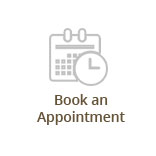On that glorious day when you finally got your orthodontic braces removed, you were likely excited about the fact that you could now smile to your heart’s content, confident in your beautiful, straight teeth. Of course, maintaining that perfectly straight smile would have required you to faithfully follow instructions to wear your retainers.
If you, like many adults, have taken to neglecting the upkeep required after having braces, you may have noticed your teeth shifting, creating gaps, crowding, or other issues you thought were gone for good. As a result, you might be understandably concerned about the prospect of having to get braces once again to correct these issues.
Don’t worry, though, there is another option. You no longer have to rely solely on metal braces to move your teeth into alignment. With the Invisalign system, you have the opportunity to avoid the discomfort and embarrassment of wearing braces as an adult. How does Invisalign work, and more importantly, will it work for you? Here’s what you should know.
How Does Invisalign Work?
The Invisalign system relies on a series of individualized, removable trays that fit over your teeth and appear practically invisible while correcting your alignment issues. While metal braces are affixed to teeth, Invisalign trays can be removed for the purpose of eating or cleaning your teeth.
In addition, you won’t have to deal with uncomfortable tightening, or metal scraping the soft tissues of your mouth. In as little as about six months, you could see significant results, although duration will depend on your particular issues. Still, it’s a lot better than wearing traditional braces for two years.
Am I a Good Candidate?
There is a misconception that if you wore braces, you aren’t a good candidate for Invisalign. This simply isn’t true. In fact, those who have suffered relapse after braces tend to be ideal candidates for treatment with Invisalign because their alignment issues aren’t as severe as, say, someone who skipped braces earlier in life. Suitability varies from cases to case, but if you’ve had braces before, there’s a good chance Invisalign will help to return your straight smile.
The best way to find out if Invisalign is right for you is to check with your dentist. If you have issues with crowding, gaps, overbite, underbite, or crossbite, Invisalign could help, but only if your problems aren’t too severe. A professional assessment will determine if you’re a good candidate for Invisalign.









